INTRODUCTION
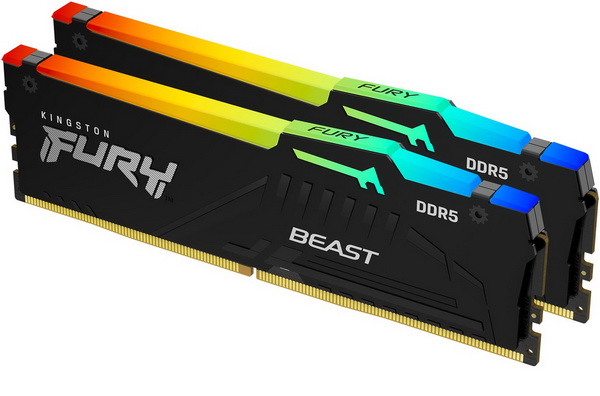
DDR5 may have surpassed 8GHz (and if my guess is right, it will eventually surpass 9GHz) but just like with DDR4 and 5333MHz such kits are clearly not compatible with every motherboard out there. As a matter of fact, just a handful of motherboards (Intel Z790 based ones as far as I'm aware) can accept DDR5 kits clocked at 8GHz and above while most others have their sweet spot set between 6-7GHz. Needless to say, compatibility is what most consumers and even professionals are after and so it's no wonder really that 6GHz kits are by far the most popular right now. The latest FURY Beast RGB 32GB 6000MHz Dual-Channel Kit is Kingston's recommendation for people who place stability and looks above performance and that's exactly what i have on my test bench today.
Kingston Technology Europe Co LLP and Kingston Technology Company, Inc., are part of the same corporate group (“Kingston”). Kingston is the world’s largest independent manufacturer of memory products. From big data, to laptops and PCs, to IoT-based devices like smart and wearable technology, to design-in and contract manufacturing, Kingston helps deliver the solutions used to live, work and play. The world’s largest PC makers and cloud-hosting companies depend on Kingston for their manufacturing needs, and our passion fuels the technology the world uses every day. We strive beyond our products to see the bigger picture, to meet the needs of our customers and offer solutions that make a difference. To learn more about how Kingston Is With You, visit Kingston.com.
The FURY Beast RGB series of DDR5 RAM by Kingston features low-profile heatspreaders (42.23mm in height total) available in two different colors (black and white) and is compatible with both Intel's XMP 3.0 and AMD's EXPO. The FURY Beast RGB line currently includes both single (8/16/32GB), dual (2x16/32/64GB) and quad (4x16/32GB) channel kits with frequencies going all the way up to 6000MHz (4800/5200/5600/6000MHz), timings as low as CL36 (5200/5600/6000MHz CL36 EXPO - 4800MHz CL38 Intel XMP 3.0 - 5200/5600/6000MHz CL40 Intel XMP 3.0) and voltages ranging from 1.1V and up to 1.35V (4800MHz 1.1V - 5200/5600MHz 1.25V - 6000MHz 1.35V). Inside the low-profile heatspreaders of each FURY Beast RGB 16GB 6000MHz DDR5 module Kingston has placed single die modules by SK Hynix (with On-die ECC) along with a total of 12 ARGB LEDs at the top (18 available presets via the FURY CTRL app and compatible with all the leading RGB motherboard sync technologies like ASUS Aura Sync, GB RGB Fusion 2.0, MSI Mystic Light Sync and ASRock Polychrome). Finally, as with most other FURY RAM lines by Kingston the Beast RGB line is covered by a limited lifetime warranty.
SPECIFICATIONS AND FEATURES

THE FURY BEAST RGB 32GB DDR5 6000MHZ CL40
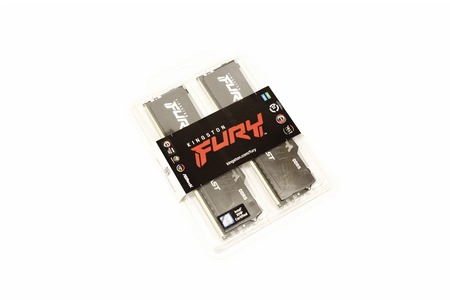
 Unlike their FURY Renegade RGB series Kingston packs the FURY Beast RGB inside a regular blister package.
Unlike their FURY Renegade RGB series Kingston packs the FURY Beast RGB inside a regular blister package.
Aside the two modules inside the package you'll also find a warranty and installation guide and a case sticker.
The heatspreaders may not be as eye catching as those of the Renegade line but they are shorter and thinner.
As usual on a small sticker located on the other side of the PCB, we find the serial and product numbers, 2D barcode, voltage needed and several certifications.
According to the CTRL software at the top of the FURY Beast RGB modules Kingston has placed 12 ARGB LEDs (over twice as many compared to their Beast DDR4 line).
To showcase just how low profile the FURY Beast RGB modules are i placed them right next to the Ares RGB by Lexar (review soon), Ripjaws S5 by G.Skill, FURY Renegade RGB again by Kingston and the Trinity RGB and JetBlack by Neo Forza.
Here you can see some details about the kit thanks to AIDA64.
FURY CTRL
Just like with the case of the FURY Renegade RGB the FURY CTRL software only detected 1 of the 2 modules of the FURY Beast RGB on the EVGA Z790 DARK K|NGP|N.
Again, this is probably why i could only choose 12 of the 18 available RGB modes/effects.
TEST BED
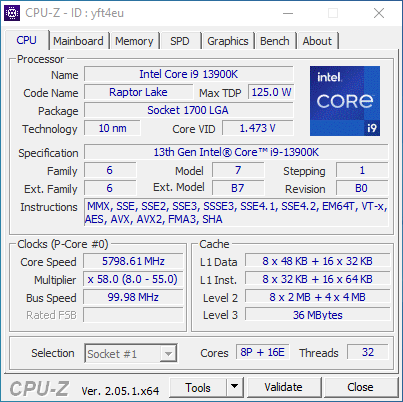

TESTING METHODOLOGY
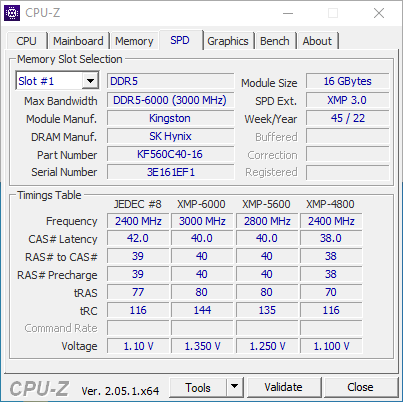
Thanks to XMP 3.0 and EXPO profiles the only thing one needs to do in order to run a brand new RAM kit at its advertised frequency, timings and voltages is to choose/enable it from within the BIOS and reboot. That being said if you're into overclocking you may not wish to use the main XMP/EXPO profile but instead to choose your very own frequency, timings and voltages to achieve even higher performance numbers and that's exactly what we'll also be doing during our DDR5 tests. To be more specific aside testing each kit with its XMP profile I'll also be upping the voltages (up to 1.4V for 1.35V kits – even though most kits can function at higher voltages I don’t recommend doing so - RAM modules that use 1.4V/1.45V/1.5V will be tested up to 1.45V/1.5V/1.55V respectively) and frequencies (200MHZ increments) until i find the maximum achievable stable frequency (those results will be entered into the OC charts). I also thought about upping voltages and reducing timings instead of increasing the frequency of the modules as high as it can go (always stable and without using 0.5-1V over stock) but the end results are pretty much identical.
As for the how I'll be testing each DDR5 Dual-Kit to arrive in the lab well there aren't that many benchmark programs that only test RAM (or at least RAM and CPU without anything else coming into play) but I’ve got most of them and so you will be seeing results from following benchmarking programs, AIDA64 Engineer Edition, Cinebench Release 23, MaxMemm2, Passmark Performance Test v10.1, Sisoftware Sandra Titanium and WPrime v2.11. All tests are performed on a fresh Windows 10 Pro x64 installation (complete with all updates until the day of this review) and are repeated a total of 6 times after which the average numbers get recorded into the charts.
* Since you all decided for me to use the Intel Core I9-13900K for graphics cards tests I’ll also be using that for DDR5 tests (5.8GHz P-Cores / 4.7GHz E-Cores / RING 4.9GHz) and in order to showcase potential gains between stock and overclocked clocks/frequencies I’ll also be using Forza Horizon 5 (1080p/Extreme Graphics). Still do keep in mind that i can't dedicate a high-end GPU solely for DDR5 reviews so each time i review such a kit I’ll be using a different chart (the card used will be listed above).
TEST RESULTS - XMP 3.0 PROFILE







TEST RESULTS – OVERCLOCK







TEST RESULTS – FORZA HORIZON 5

CONCLUSION
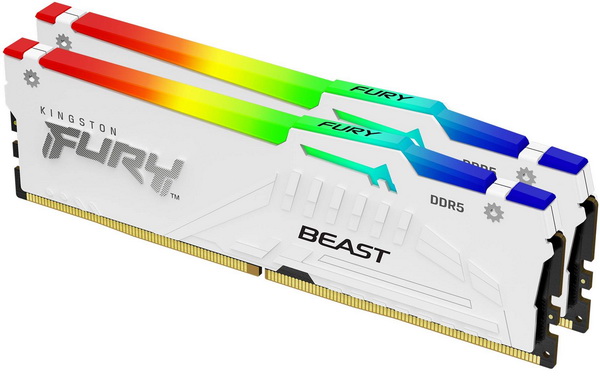
The FURY Beast RGB line of DDR5 kits by Kingston may not be as fast as their FURY Renegade RGB one (6000MHz vs 7200MHz max kit clocks) but the 32GB kit I received actually did very good in my tests. Overclocking headroom is also very good since at just 1.4V I was able to hit a stable clock of 6600MHz at CL40 so with little effort you can squeeze a bit more from them. In terms of looks the low-profile heatspreaders combined with the top ARGB LEDs result in a very good result which shouldn’t let anyone down (a quick TikTok and YouTube clip should also be up by now). As for available kits this is one thing Kingston has almost always done right and they keep doing it in order to cover as many people as possible.
Right now, the Kingston FURY Beast RGB 32GB DDR5 6000MHz Dual-Channel Kit retails for USD139.99 inside the USA (Amazon.com) and for 139.61Euros inside the EU (Amazon.de) so pricing is also very good. Performance, looks, pricing and even warranty, the FURY Beast RGB 32GB DDR5 6000MHz Dual-Channel Kit by Kingston has it all. Yes, it’s not the fastest one in their product lines (or out in the market in general) but it hits the sweet spot between performance and price and for that it gets the Golden Award.

PROS
- Build Quality
- Overall Performance
- Good Overclocking Headroom
- RGB Lighting (12 ARGB LEDs With 18 Effects)
- Available In Black & White Colors
- Available Kits (Single/Dual/Quad)
- Limited Lifetime Warranty
- Price (For Some)
CONS
- FURY CTRL (Module Detection)

 O-Sense
O-Sense














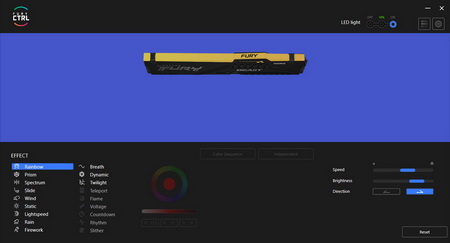



.png)

